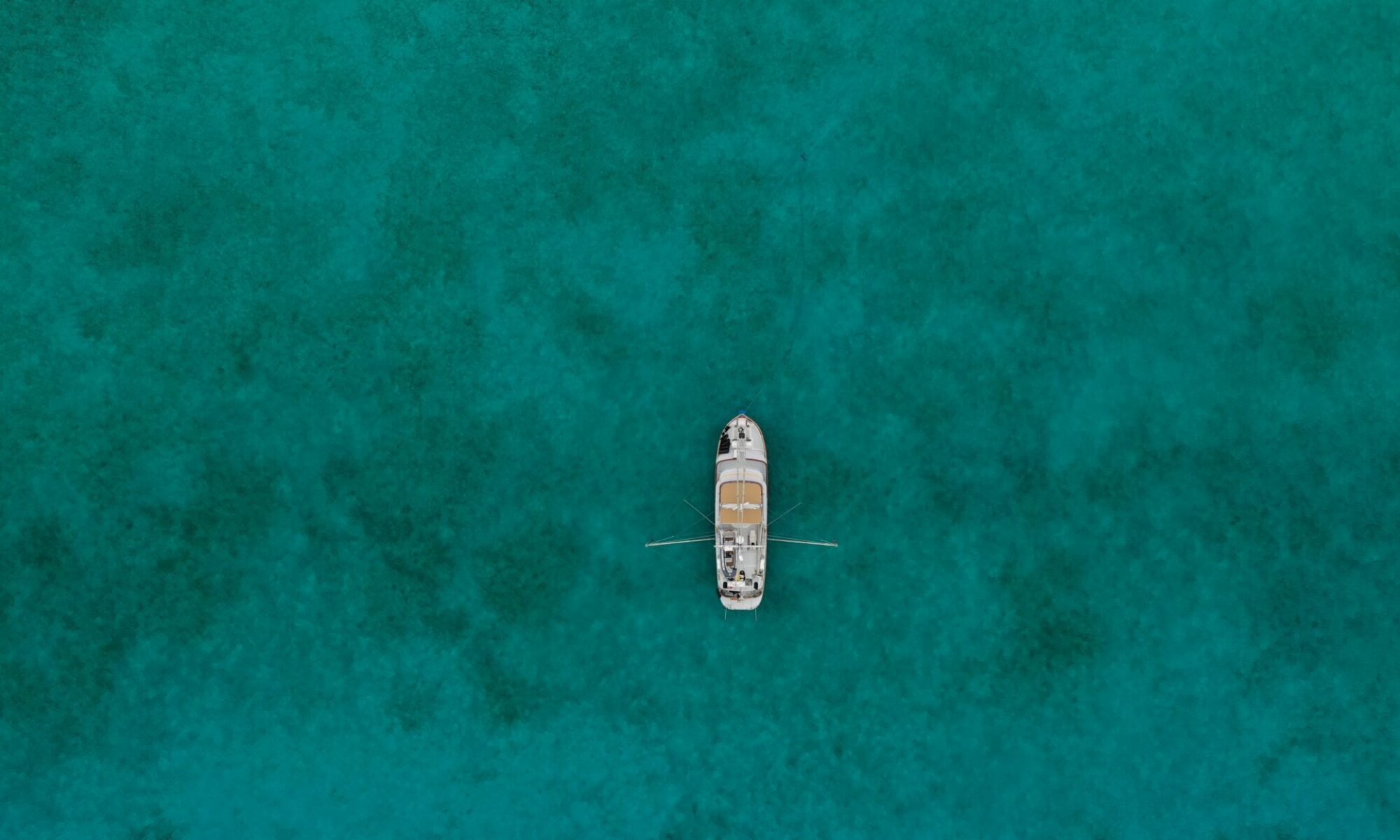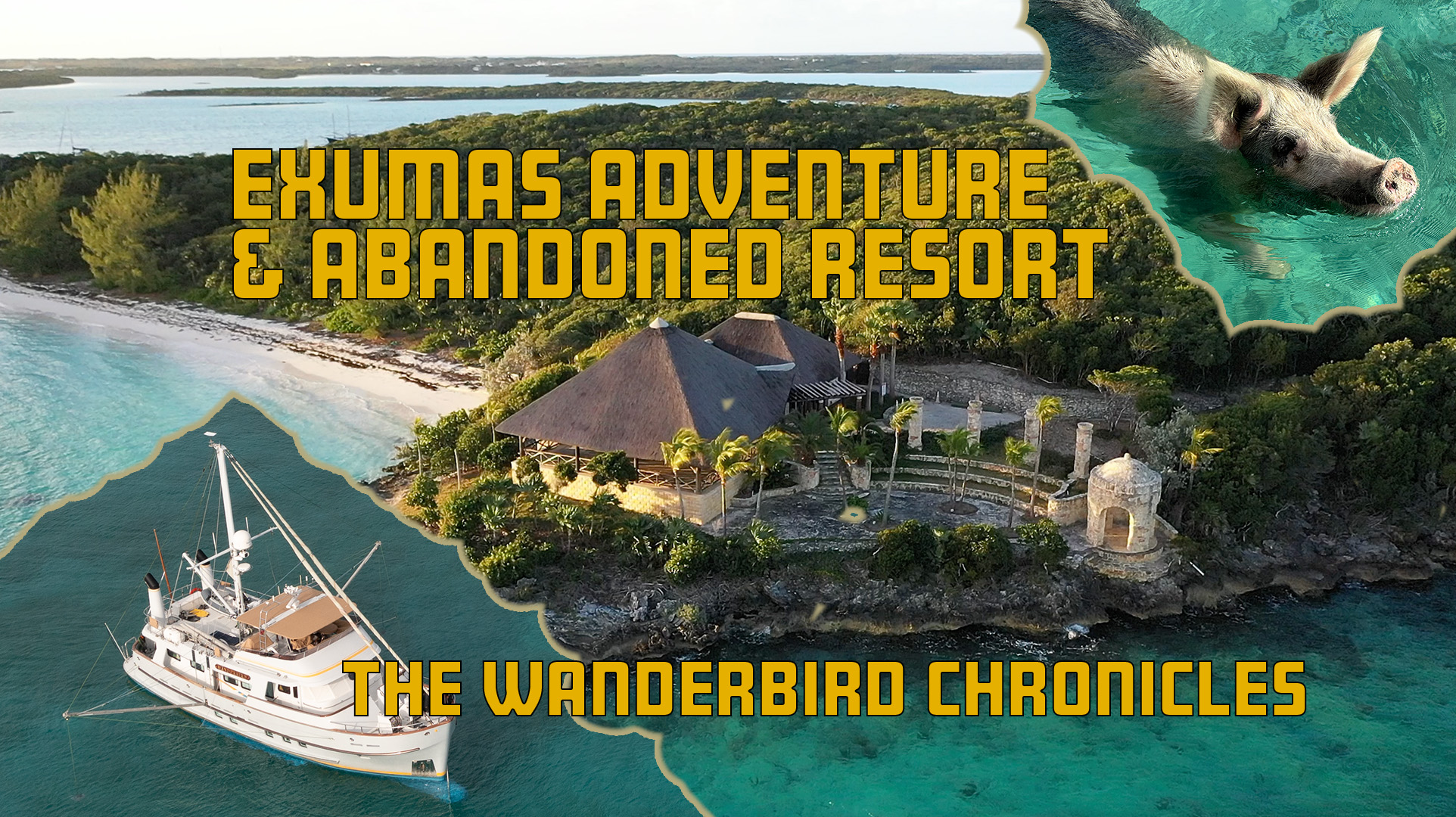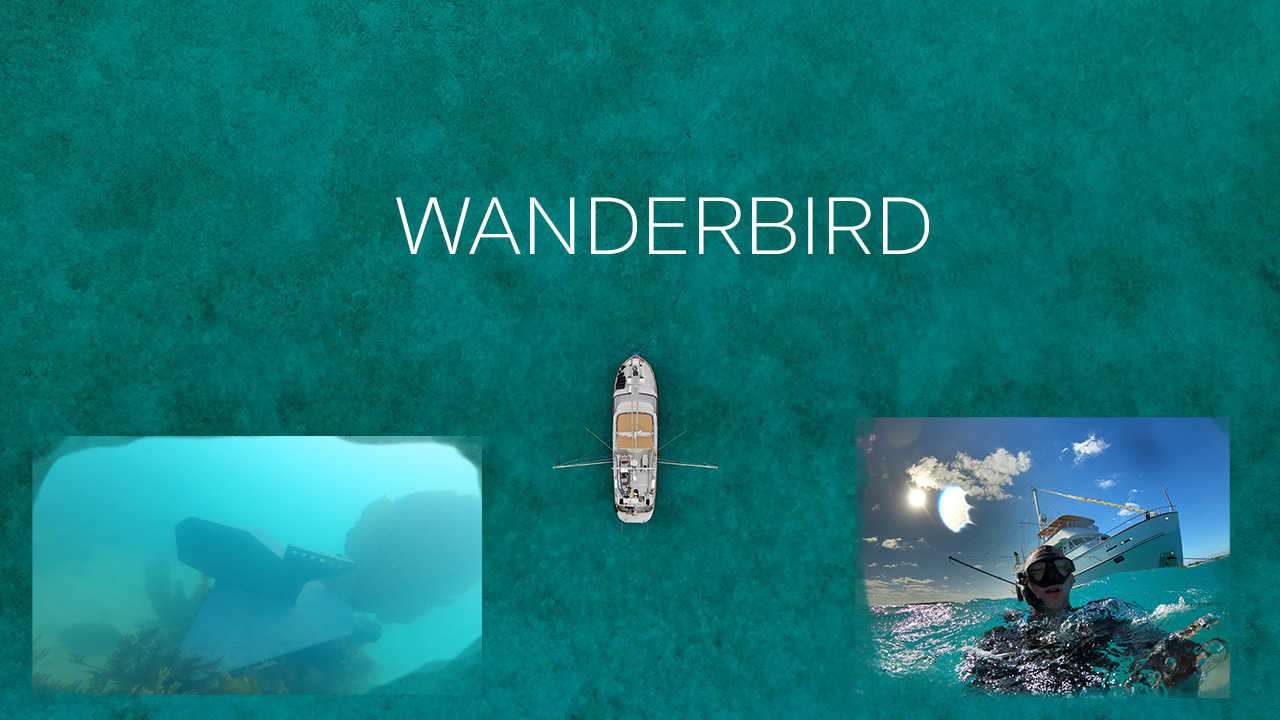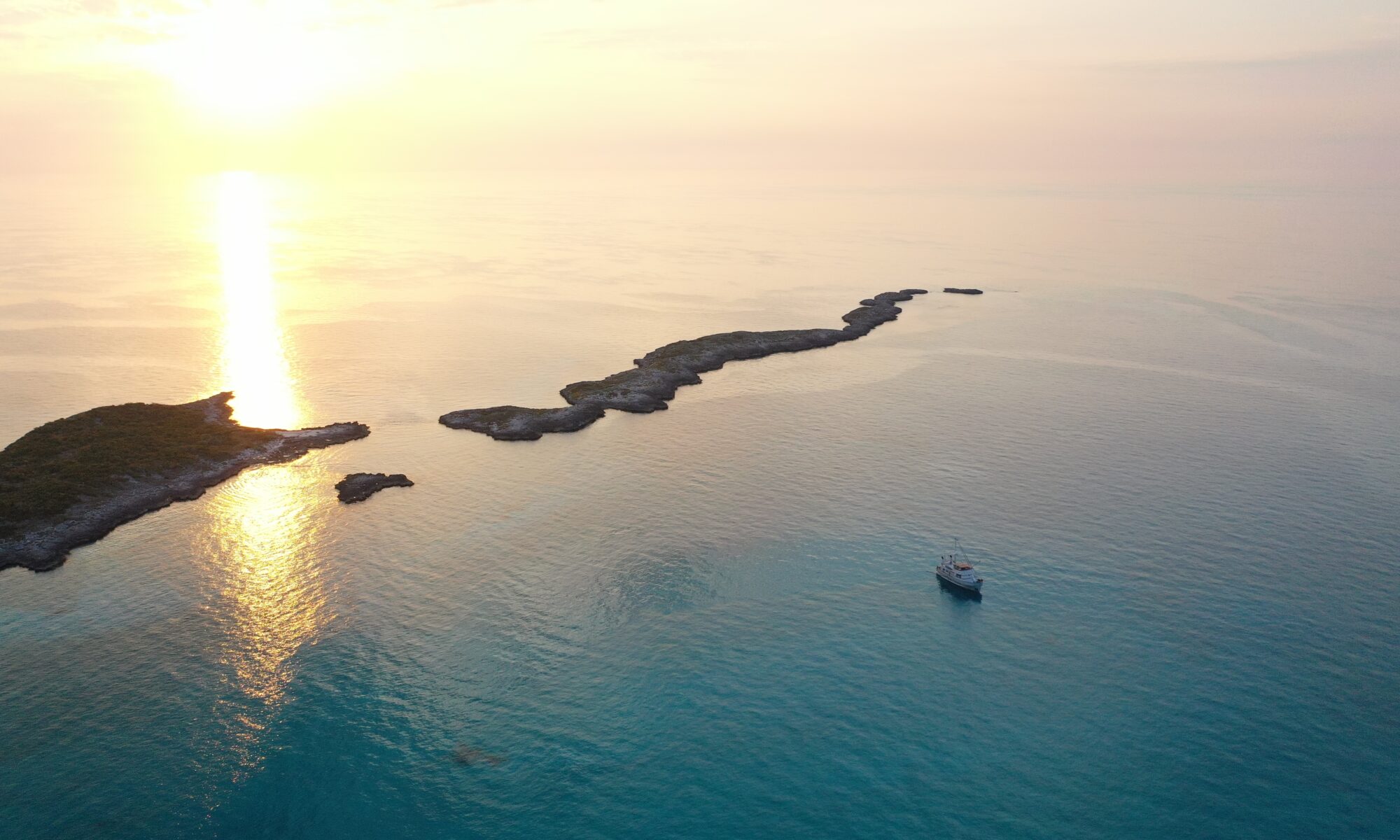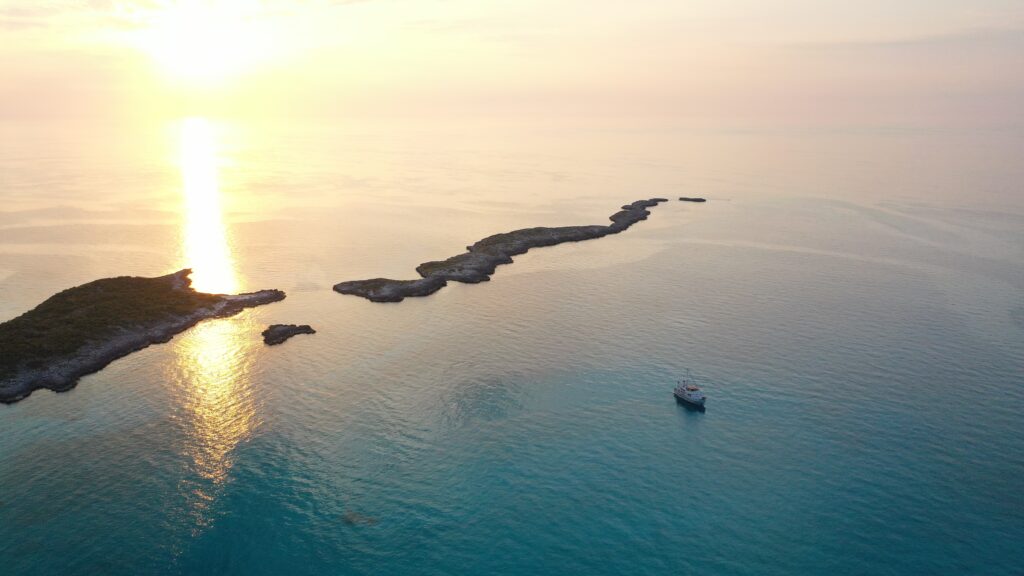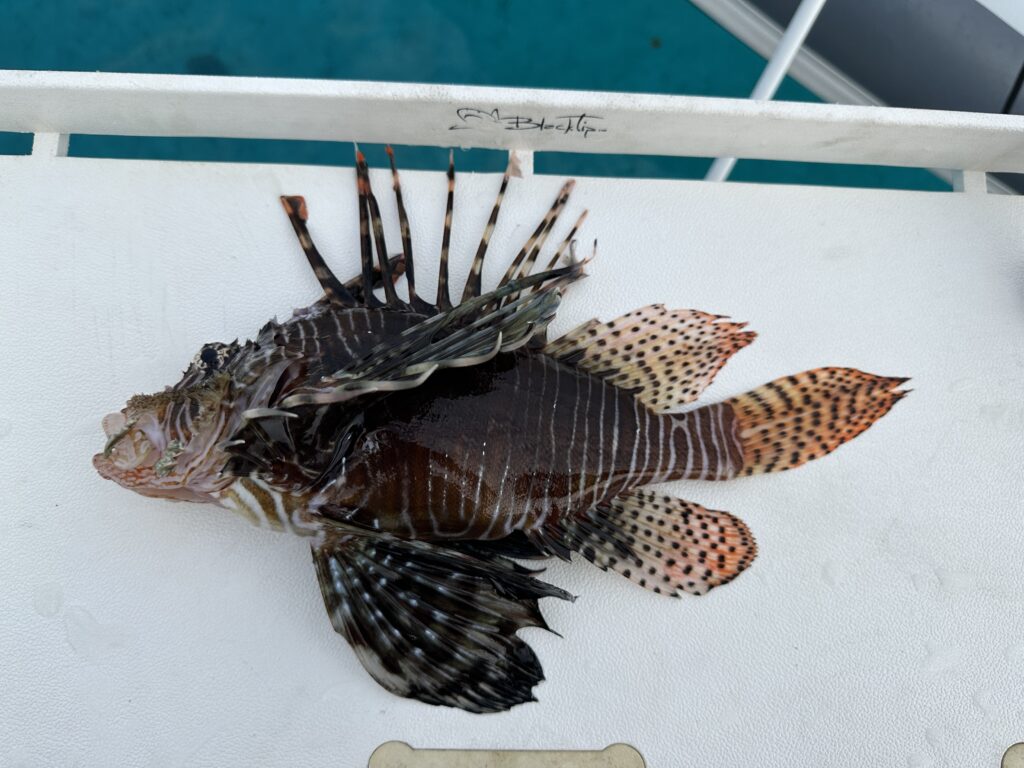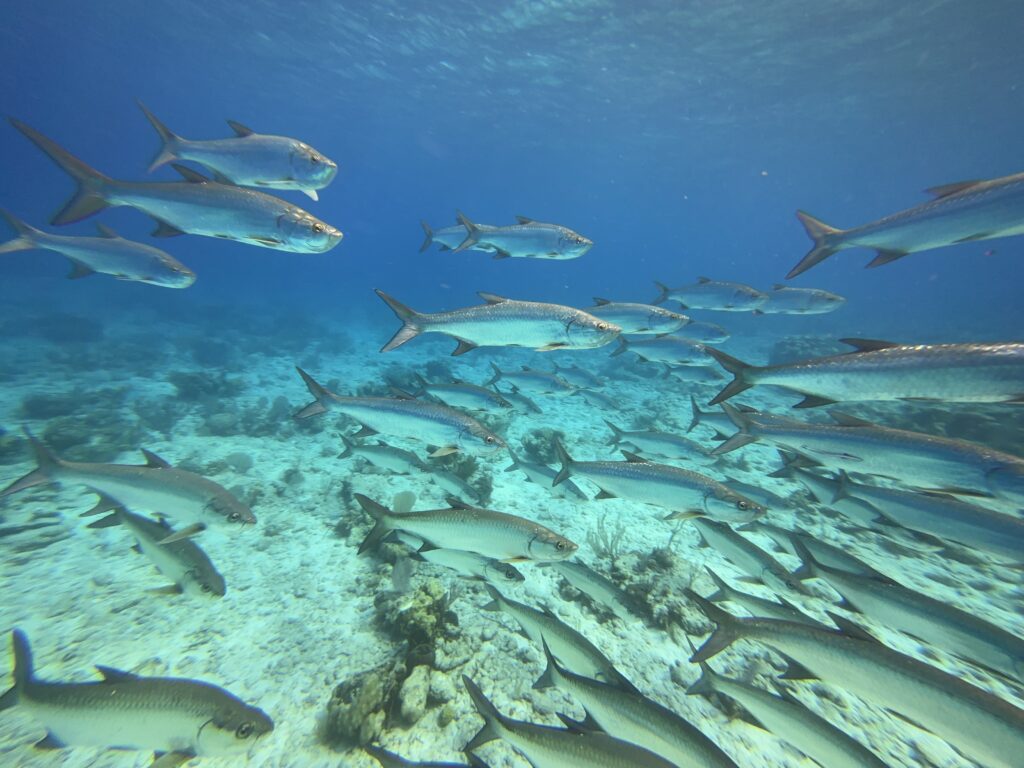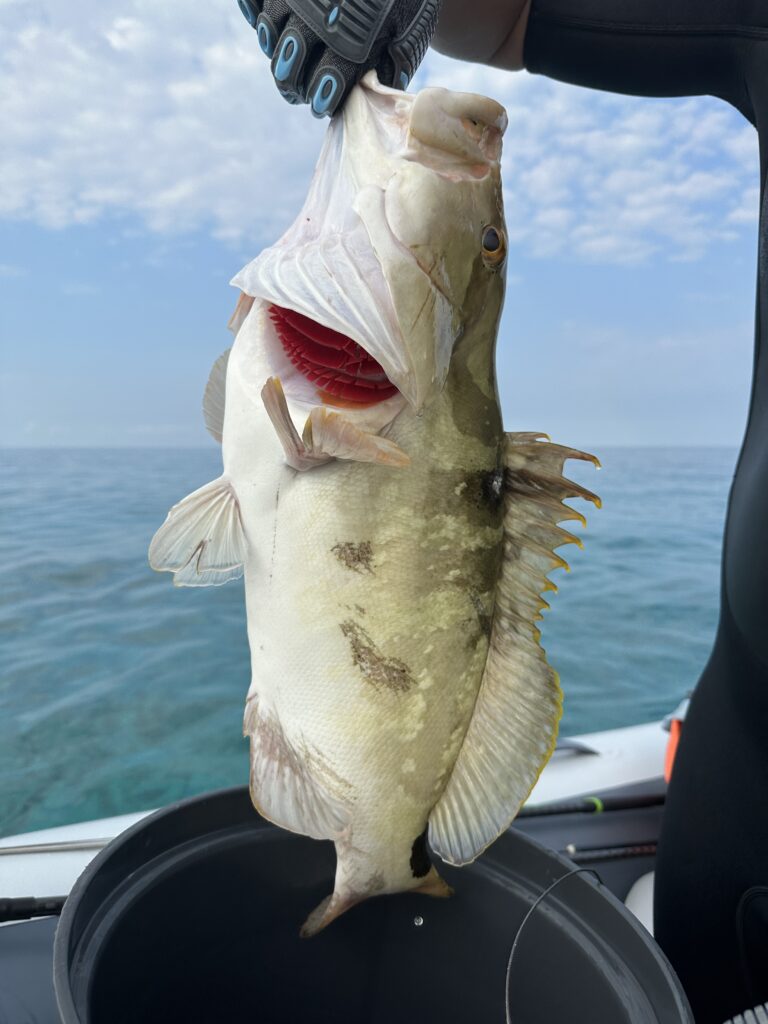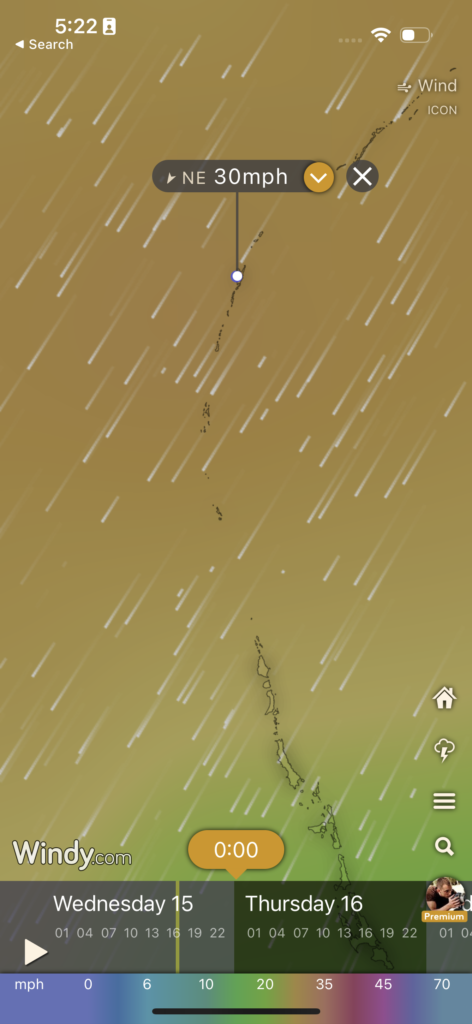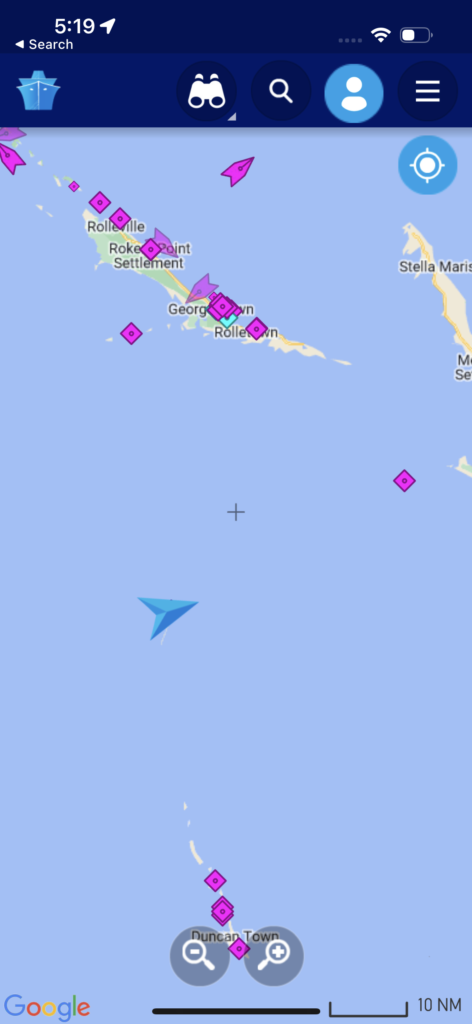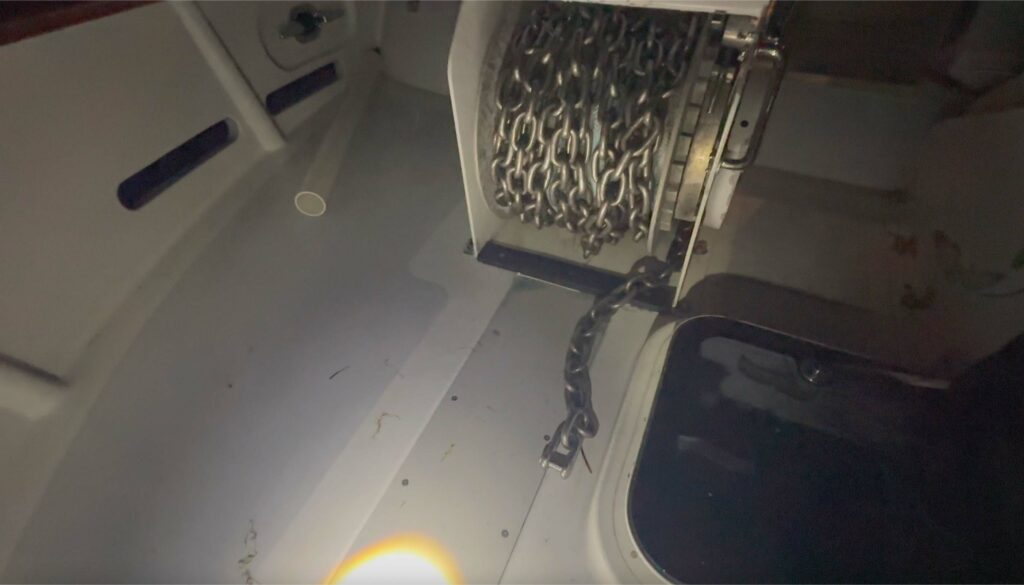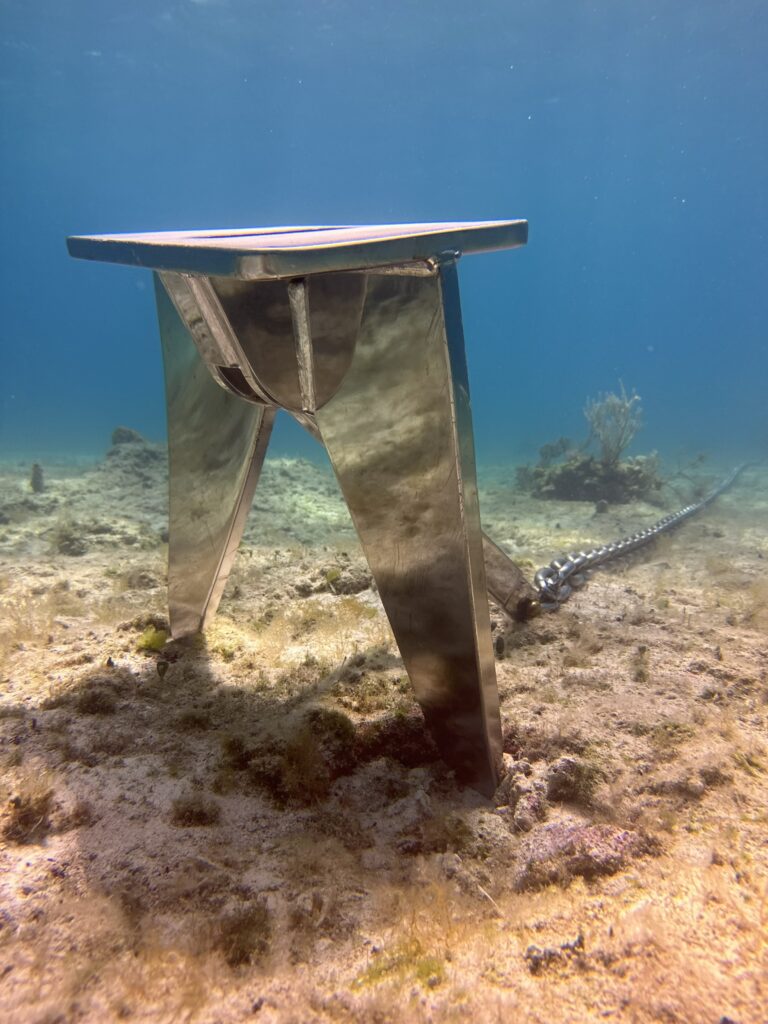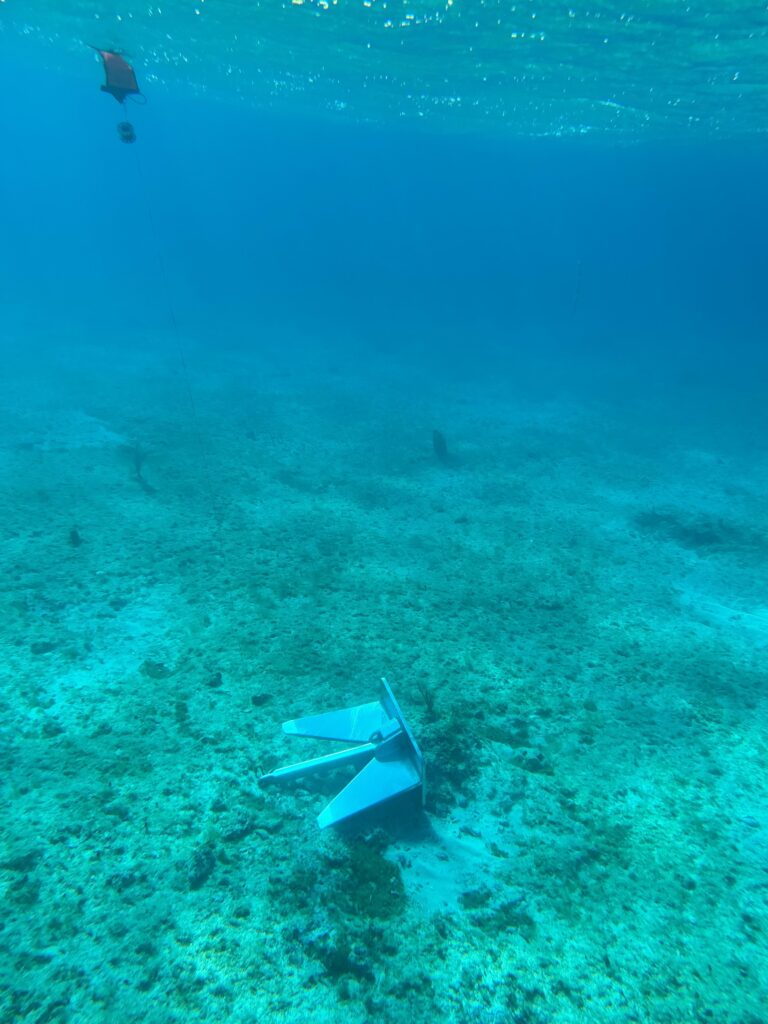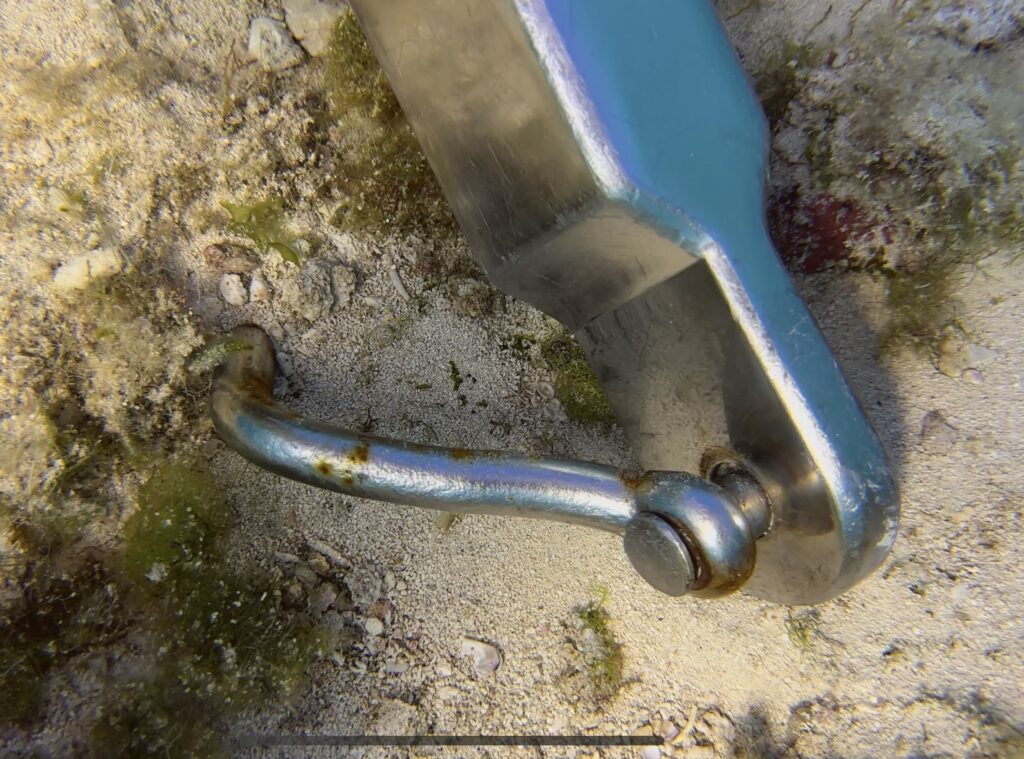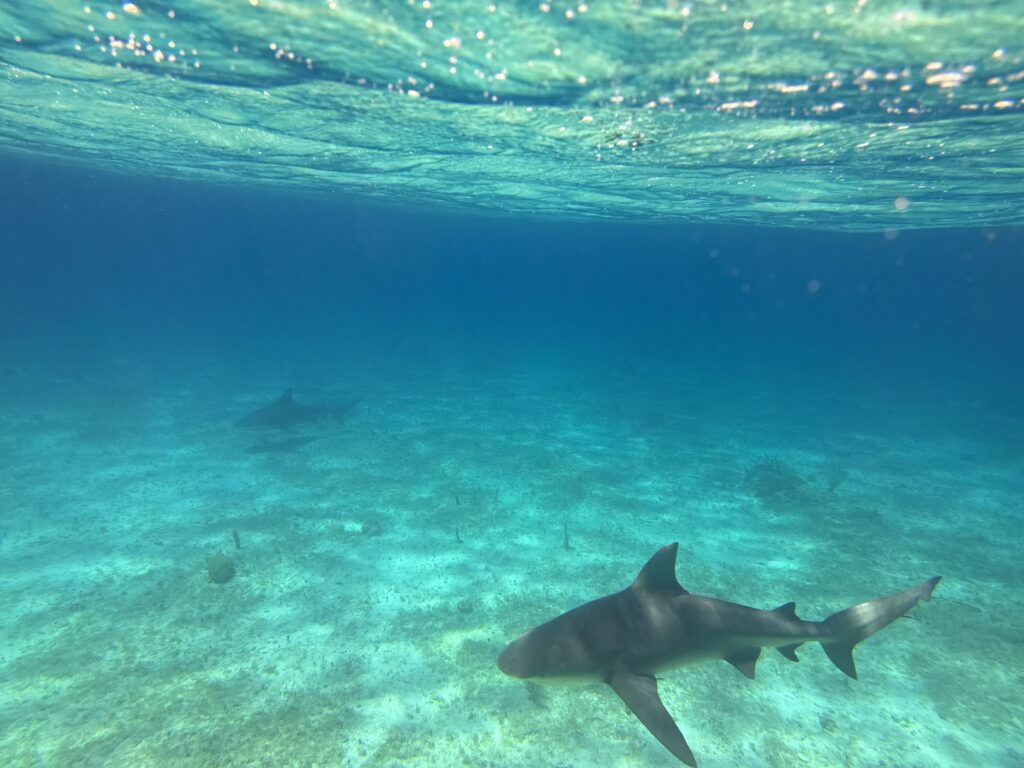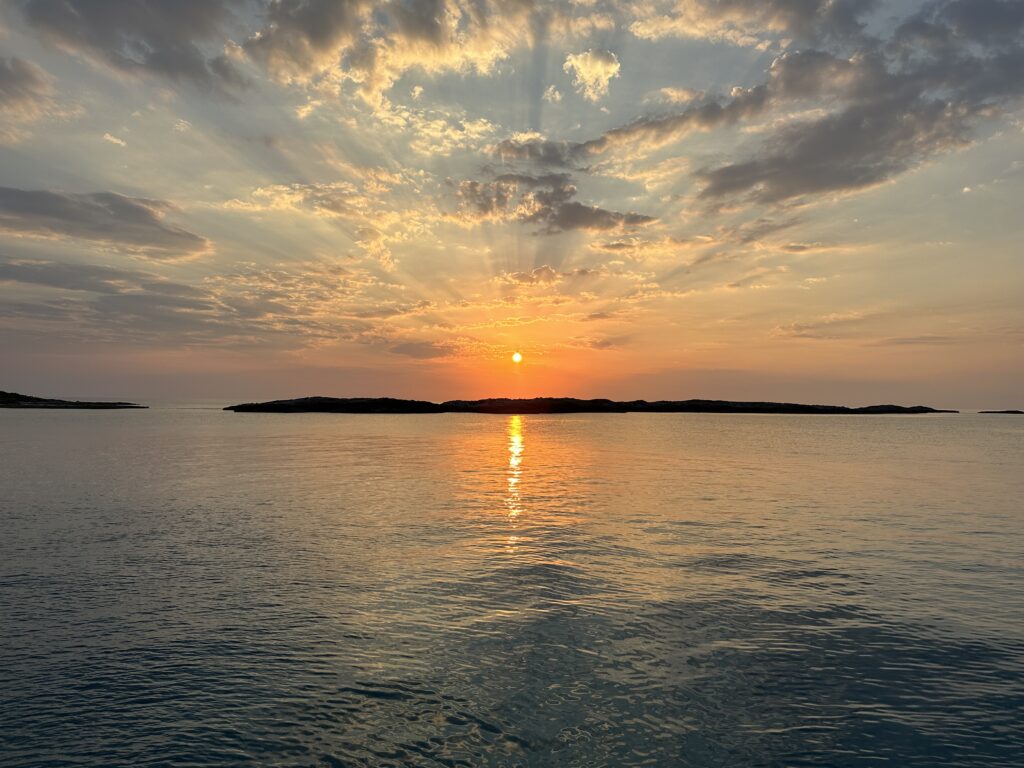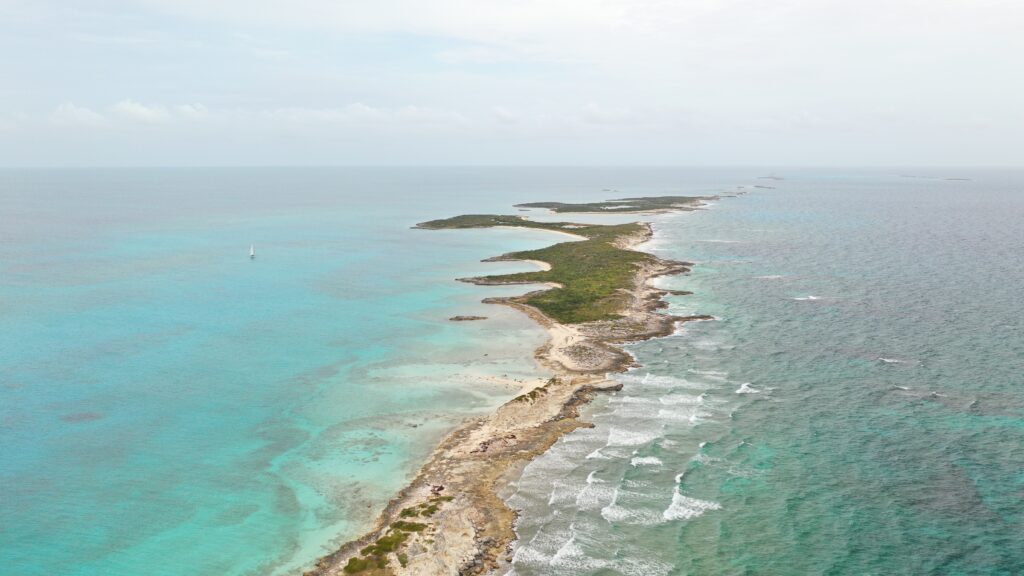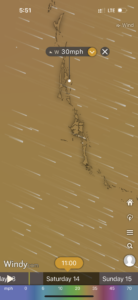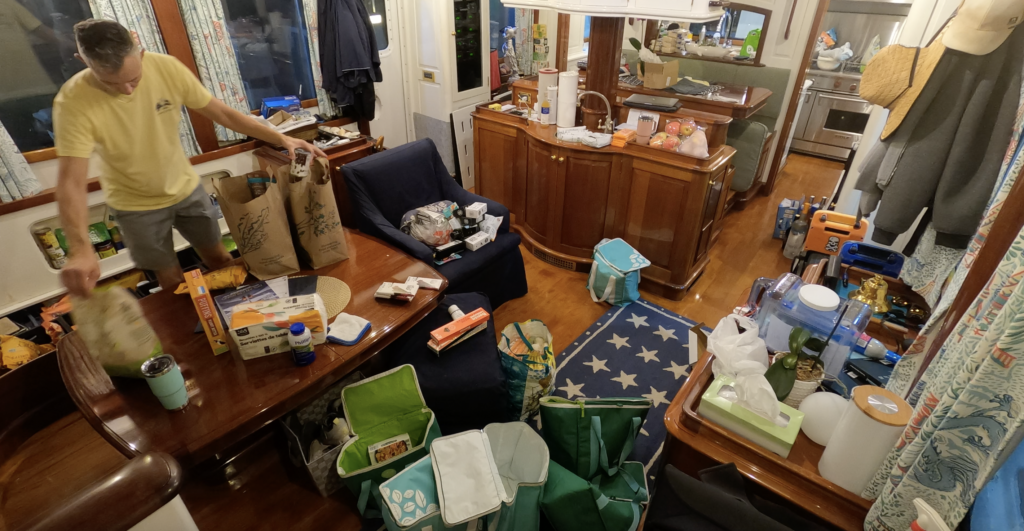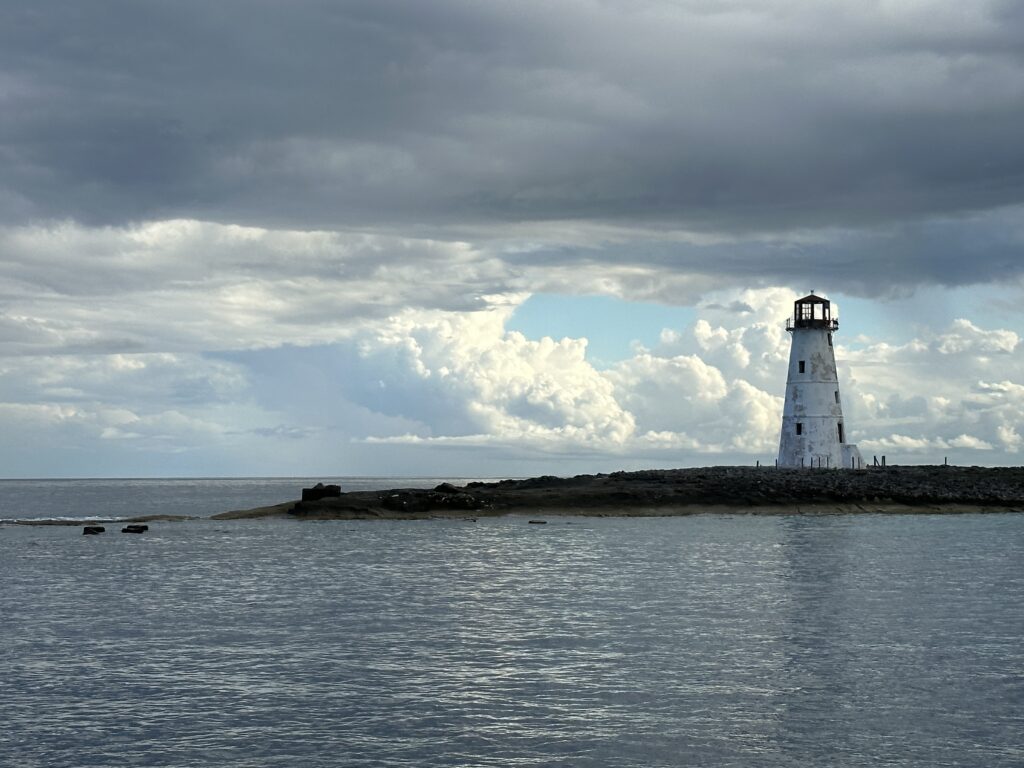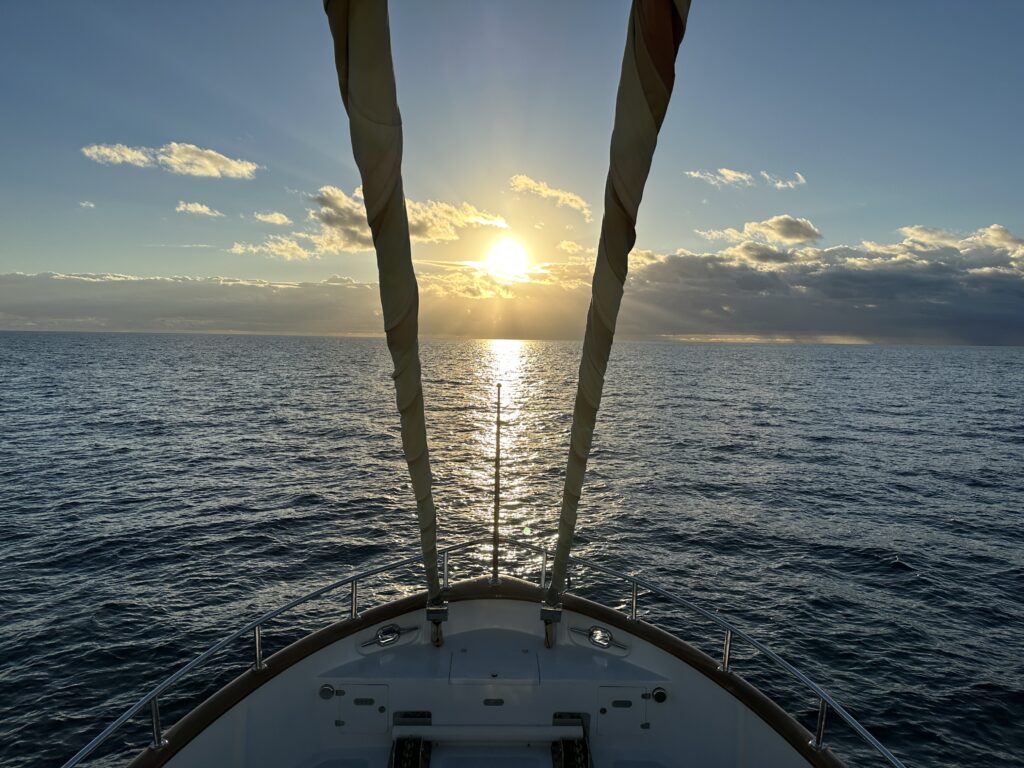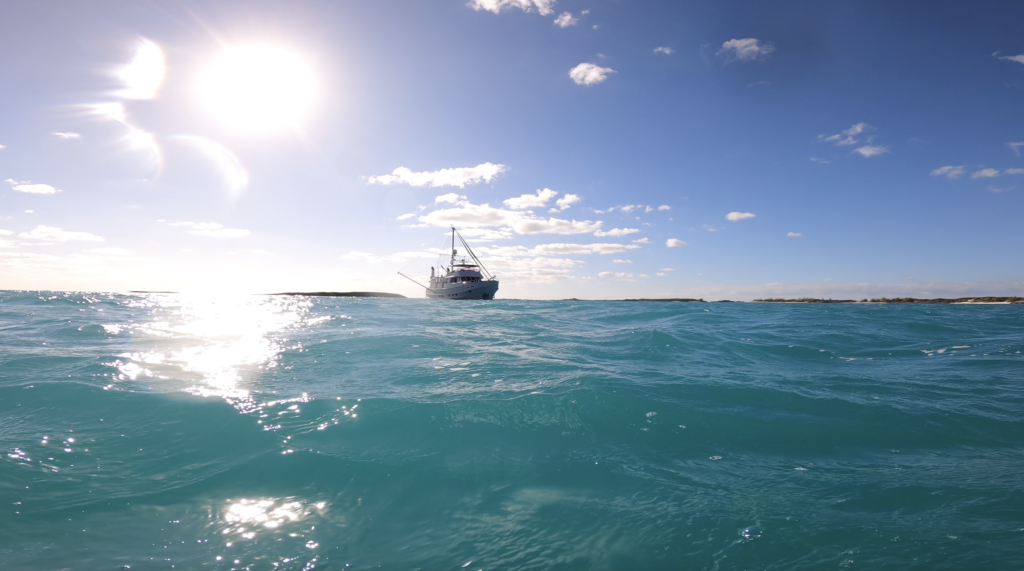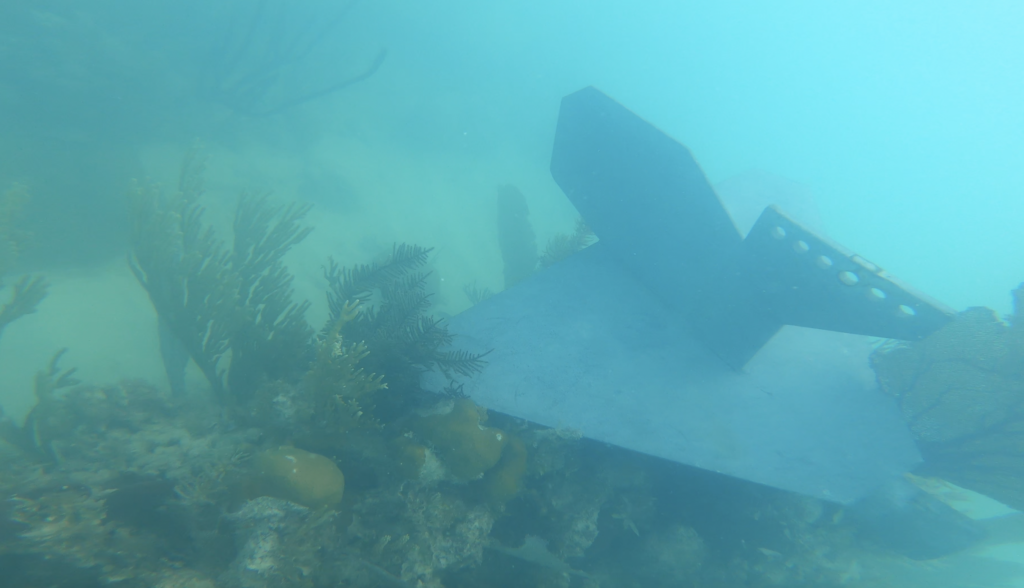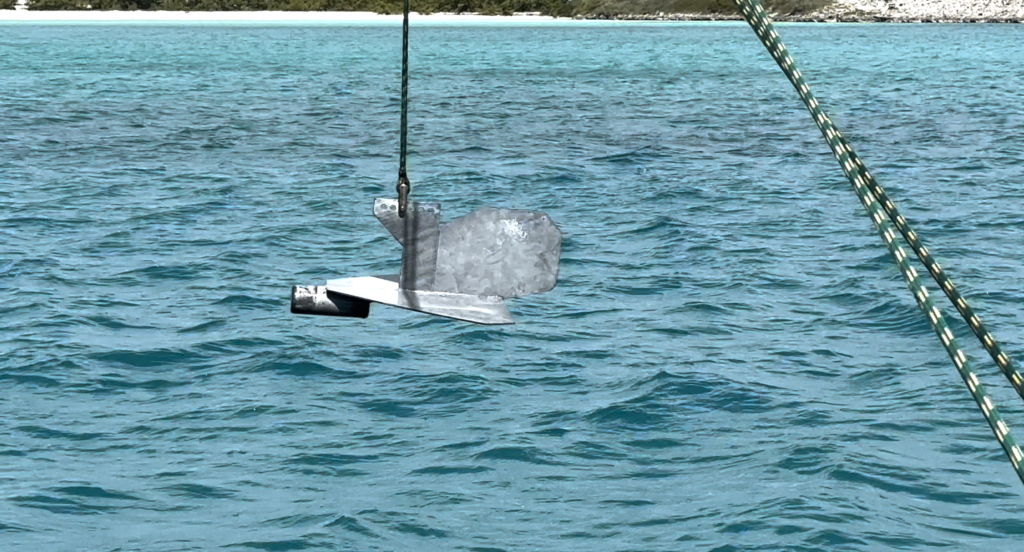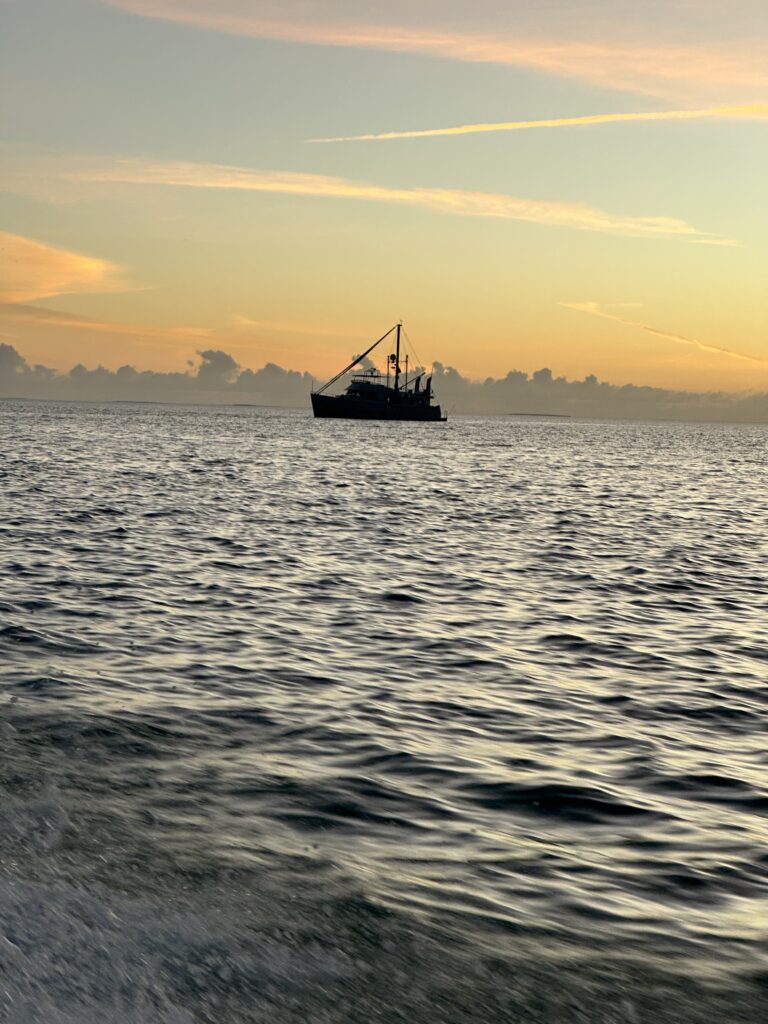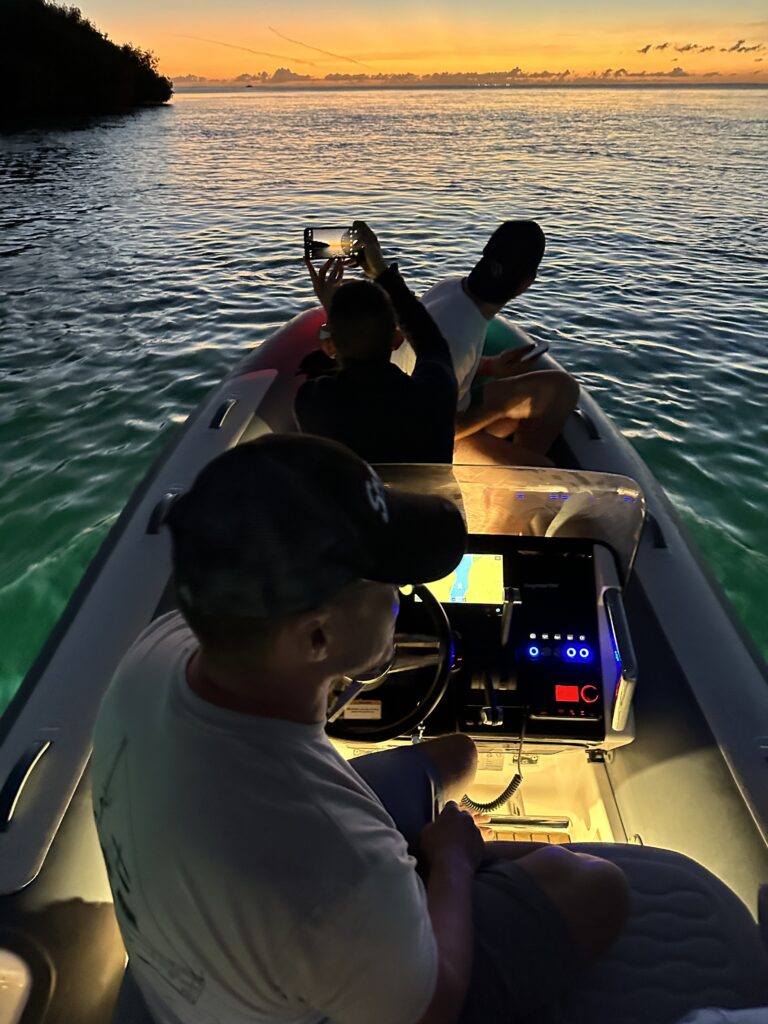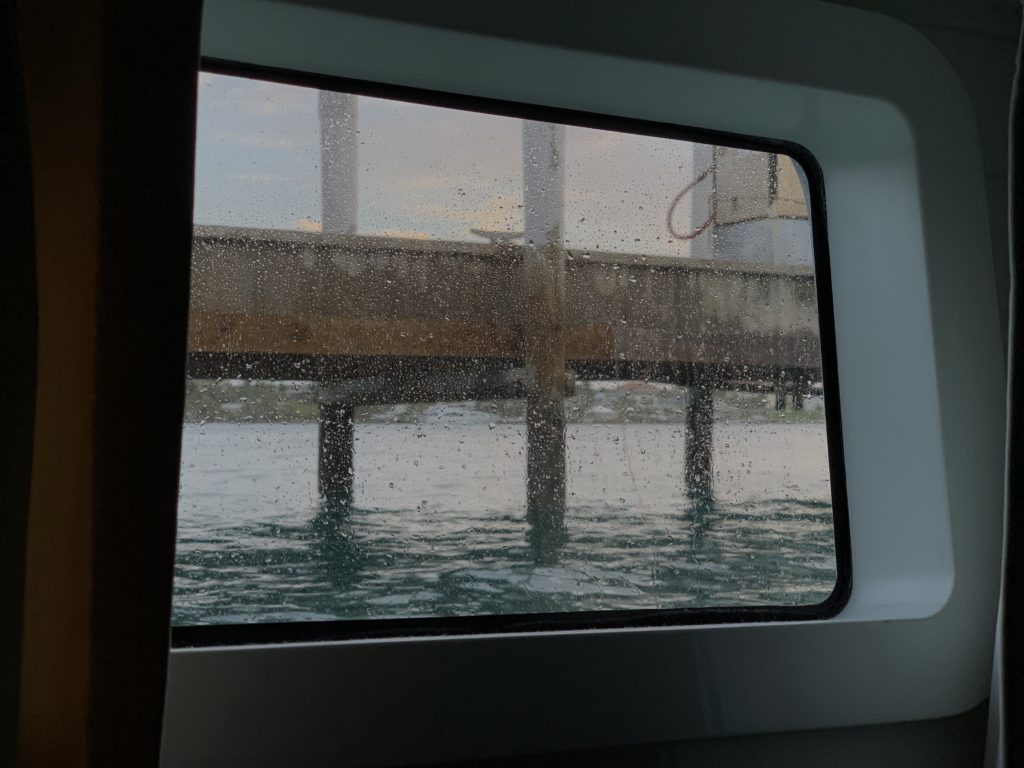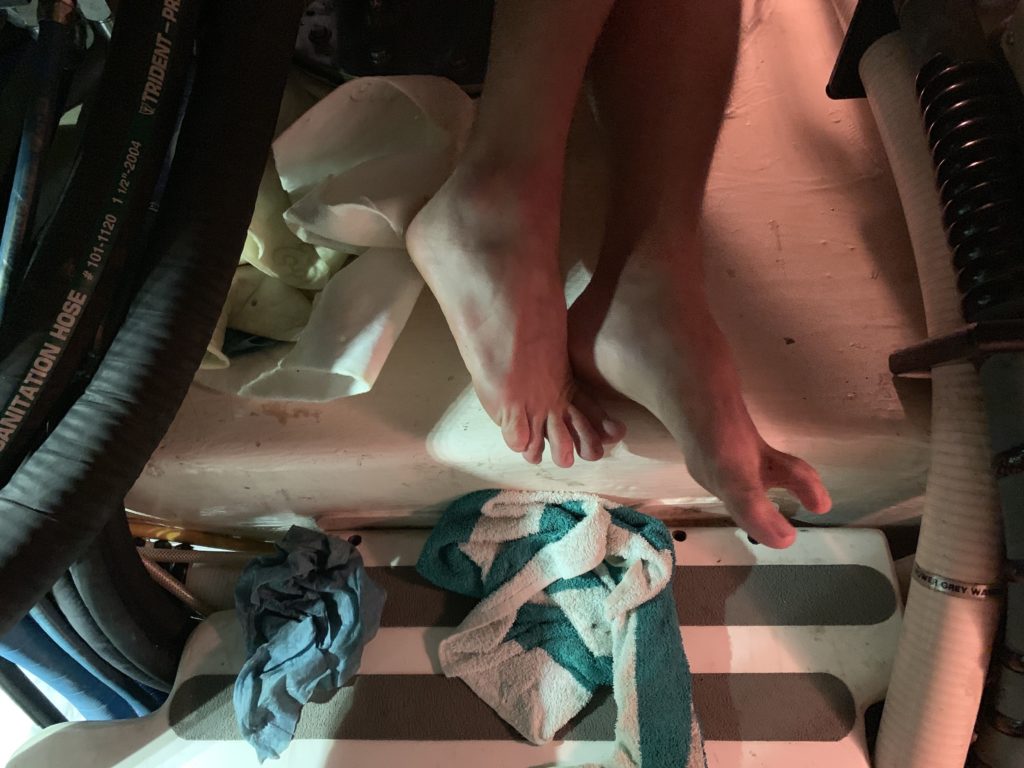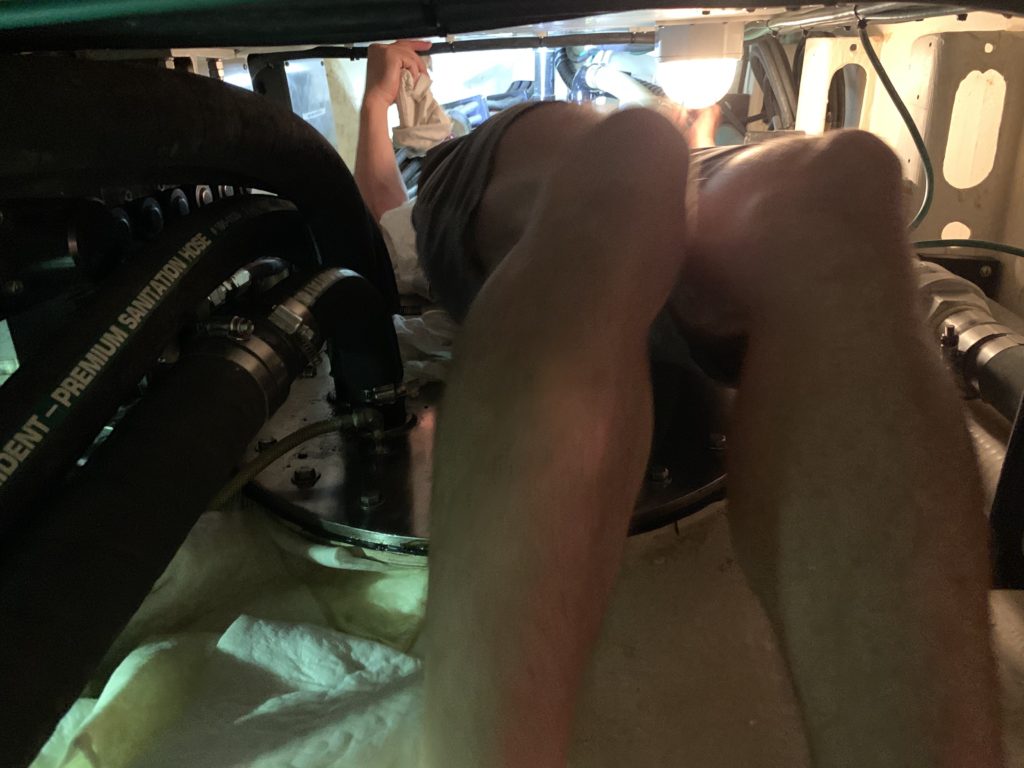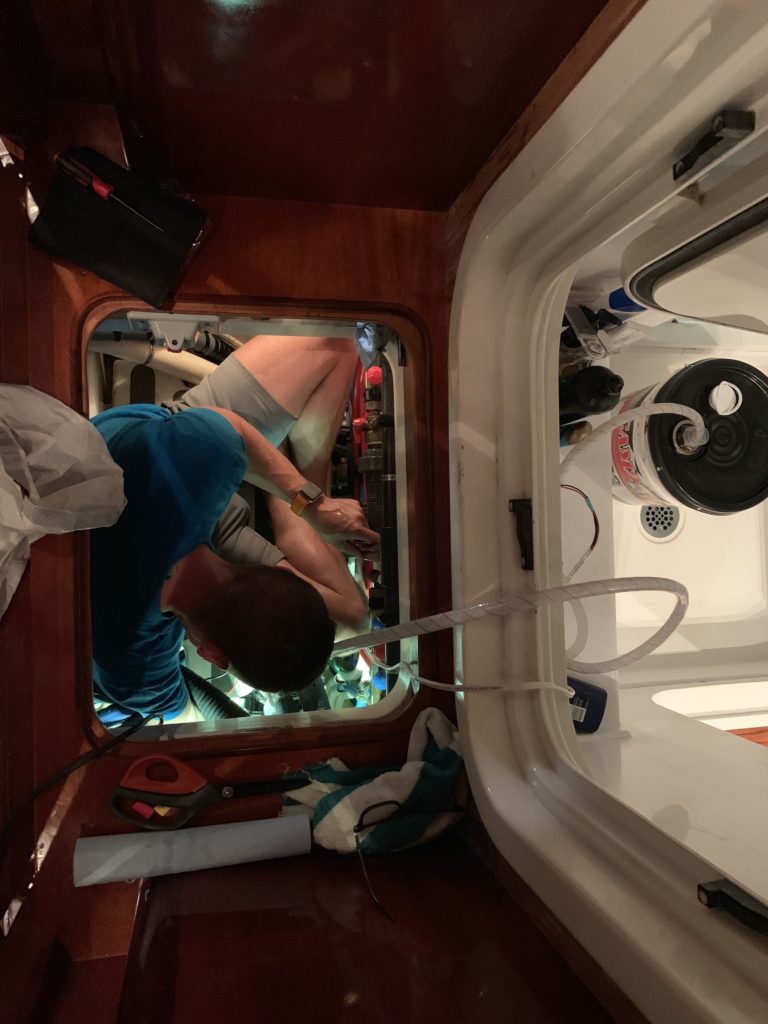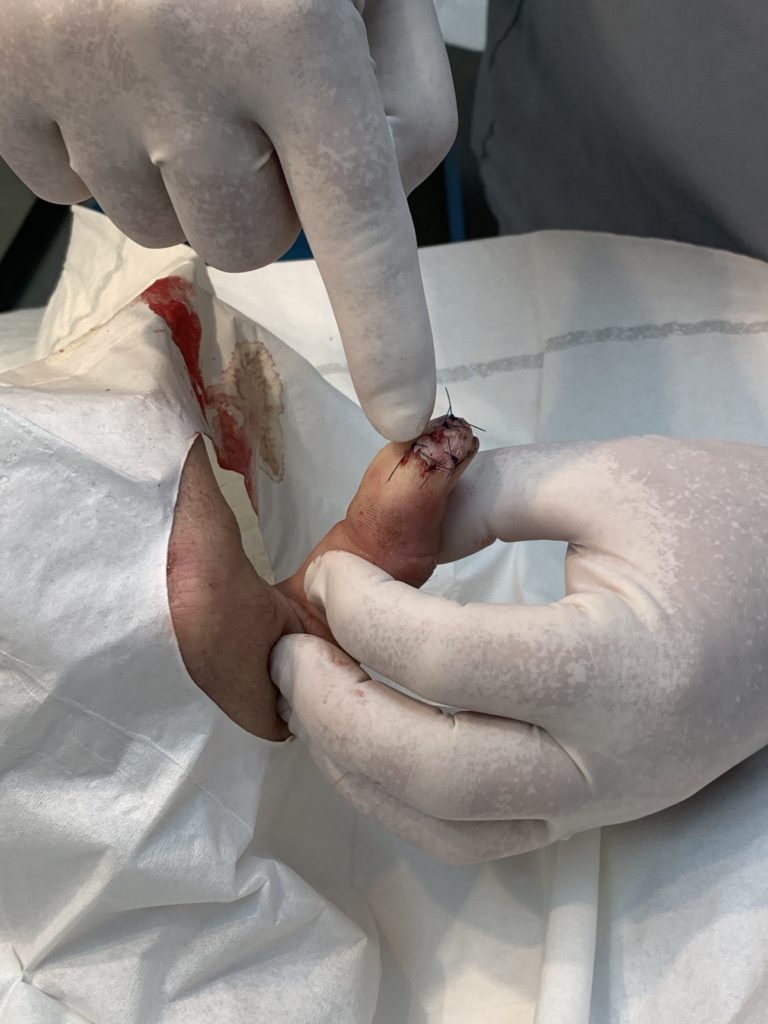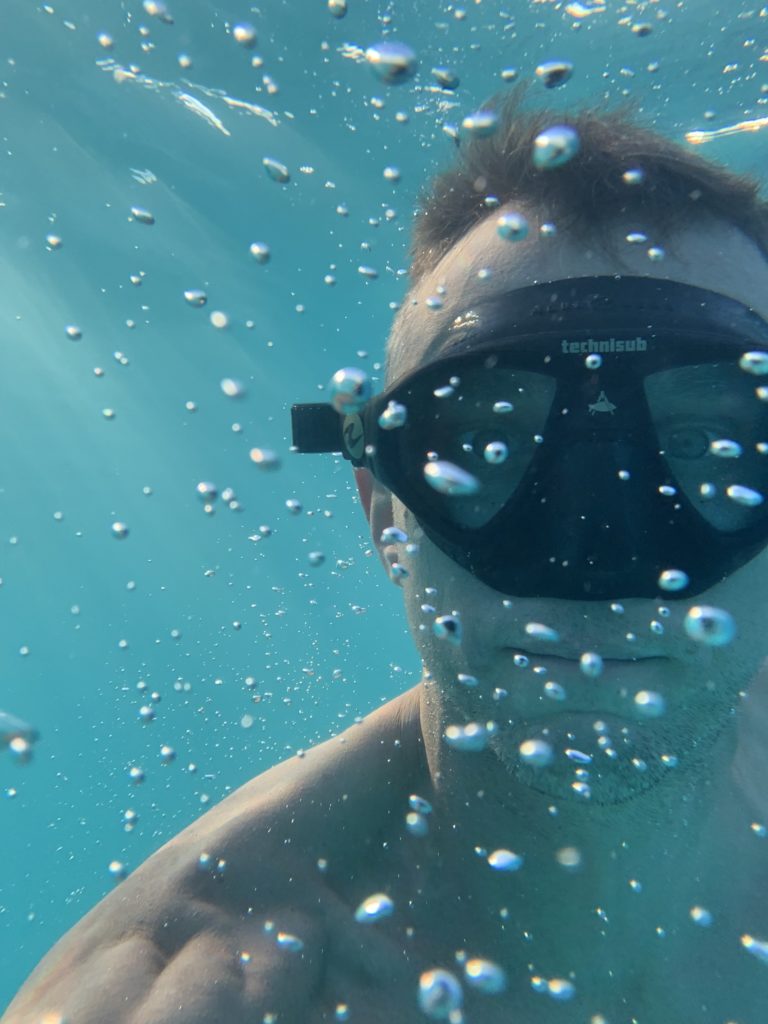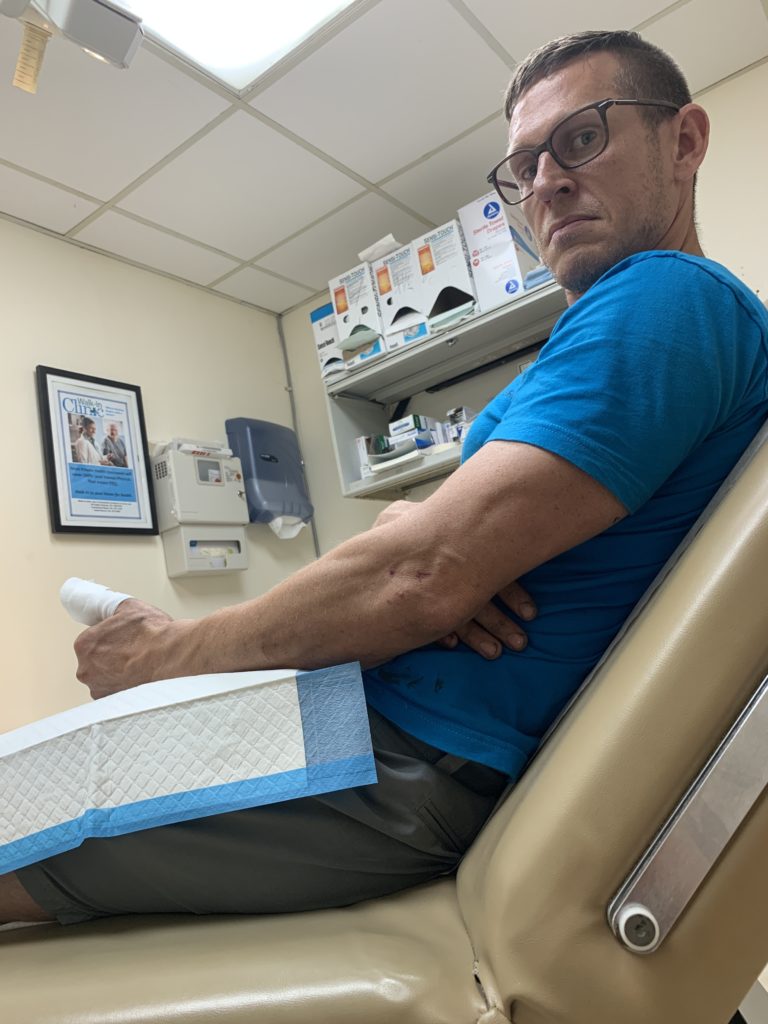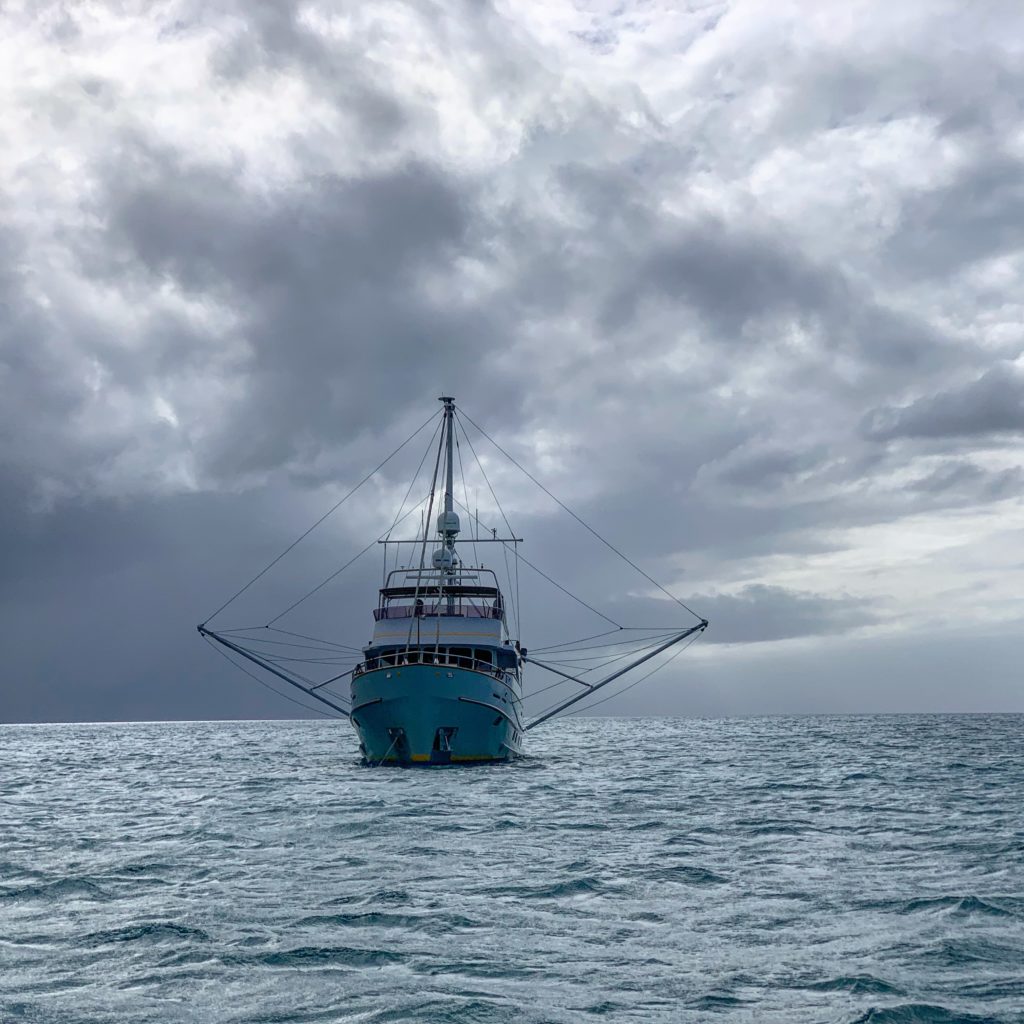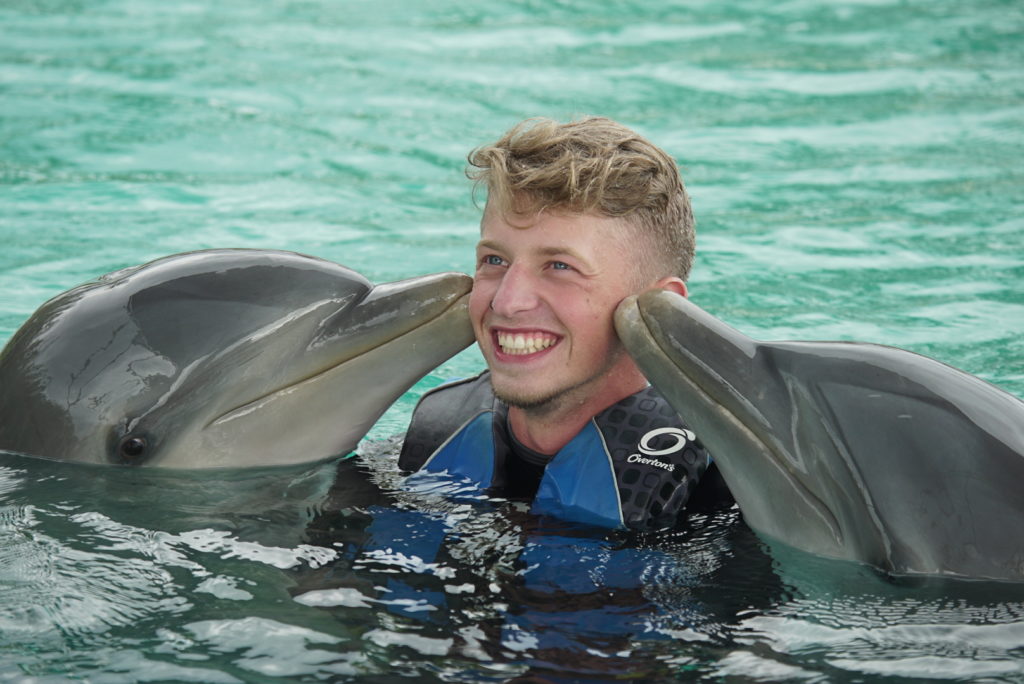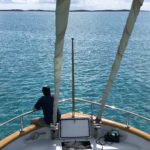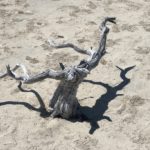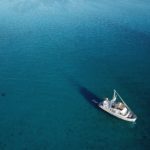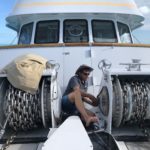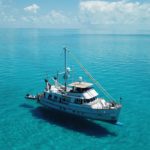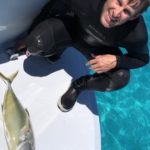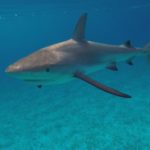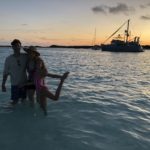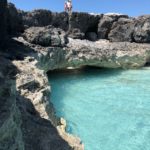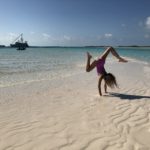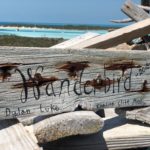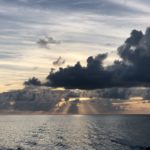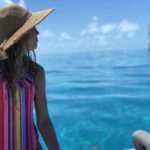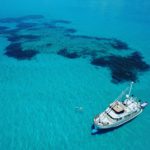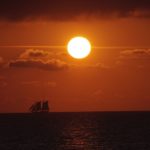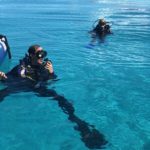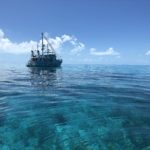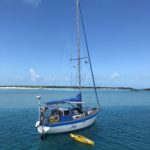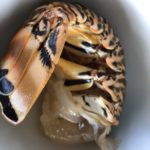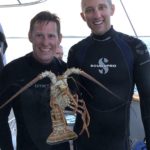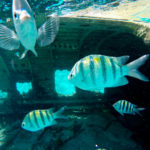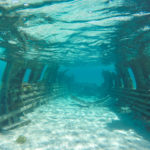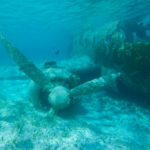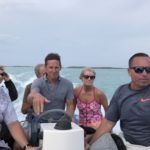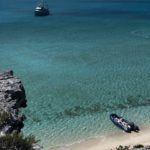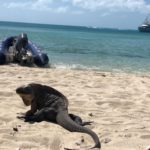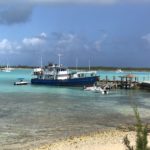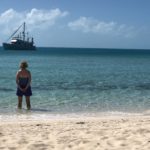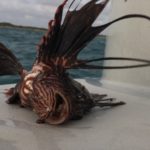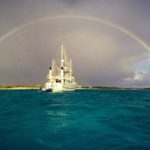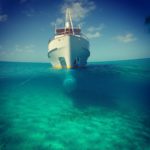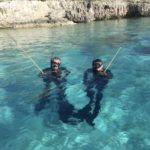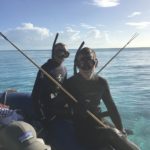Every time we researched ‘things to do in the Exumas’ the number one hit was pig beach. If you haven’t heard of it, it’s exactly what it sounds like: a beach on an island called Big Major that is occupied, dare I say infested with, pigs.
Rumors fly about the origin of said pigs, including something to do with shipwrecked pirates, but the most plausible is that they’re there to lure in tourists — and lure they do, as there is often in excess of 20-40 boats in the well protected bay and at least as many hungry pigs of all sizes.
We avoided the pigs for as long as possible, instead exploring the natural beauty of the Exumas over transplanted farm animals that some claim are ‘incredibly clean’ but I can tell you first-hand, from raising one as a kid for FFA, pigs are not clean animals. In any case, my sister was visiting and wanted to see the pigs, so we obliged.
She, her husband Cliff and my niece Evaline came for about a week and they picked the absolute best possible stretch of days. The intermittent winds we had experienced since December completely gave way to just a few knots here and there – I think the wind meter peak memory may have logged a whopping 10.
Our first stop was a night at the Exumas Land and Sea National Park just off Shroud Cay where we spent the next day cruising in the tender through the northern cross-island, tidal river, from the banks to the sound.
We followed up the peaceful float with an exhilarating free-dive through a narrow channel at maximum ebb tide – something my friend Lucas thought up while visiting a couple weeks before. Luke dropped us off on the up-stream, banks side of the channel and followed us as we drifted with the fast-moving tidal flow. Looking down at the terrain flying past and diving 15-20 feet with the tidal push, I think we got a taste of what it’s like to be a dolphin!
The timing works out perfectly if you do the river float at high slack tide and then cruise to the channel north of Shroud and float from the banks to the sound side when the flow is moving at top speed.
That afternoon we headed south and slightly back west onto the banks and found one of those dark spots between Nassau and the Exumas and dropped anchor off a pretty large reef about half the size of a football field.
While we snorkeled around, showing my niece how to free dive and observing sea turtles, skates and abundant fish, Luke busied himself by catching a massive yellow-tail Jack. The fish, combined with the lobster we snagged the previous week on the last day of the season, made for a meal fresh from the sea.
I prepared the jack the same way I had a couple days earlier using some snapper: baked with salt, pepper and paprika and then topped with a lemon-herb butter, but the fish was quite dense and hearty, more akin to swordfish or the like and may have been better off thinly sliced and done up another way. A couple days later I treated the family to the last of the snapper for comparison and we all agreed the flakey, delicate, white fish was better with that preparation.
As we prepared to pull up the port anchor an odd noise came from the winch. You become accustomed to the various ship noises how things should sound. A strange drip or motor draws immediate attention. This clunking, grinding sound was bad news. Luke and I spent the next hour-and-a-half using a hand-cranked come-a-long winch to pull the 400 pound anchor and 75 feet of heavy chain up. Luke would pull winch the tackle up a few feet and I would turn the massive chain reel, lock it down, then we’d move the hook a few feet down and start again. Thankfully Wanderbird has two of most every system otherwise we’d have been headed right back to port.
We carried on down to Bitter Guana where we gave the family a taste of island life on Staniel Cay with some lunch and light provisioning at the Pink Pearl. We realized that the tide was right that afternoon for Thunderball Grotto and everyone agreed that snorkeling through the cave, with the beam of light streaming through the opening above, was quite a treat. The cave was filled with fish and the coral outside the east entrance was still abundant, though clearly suffering a bit from careless boaters and snorkelers.
Sunset on Bitter Guana with a short hike amongst the Iguanas rounded out our day and we were free the next morning to head north, back into the Exumas Land and Sea Park, this time picking up a mooring ball at Warderick Wells.
Arriving at Warderick we radioed to the park headquarters and were assigned a mooring ball directly in front of the office. This meant we needed to navigate the narrow, populated channel to ball 17. Tide was in our favor at slack high tide, but it was tough to tell which route we should maneuver around the other boats. We asked for advice from the ranger but she was unable to provide any advice as the shifting tides dictate the best route.
We worked our way in, past the first stretch along the right side and as we shifted to the left for the second line of boats, I found Molly laying on the floor of the upper deck – her way of dealing with the stressful situation.
We made our way around the shallow shoal in the middle of the bay and spun 360 to line up with the mooring ball. A couple of attempts with the hook – a bit of a challenge from the high bow of Wanderbird and we were tied up in a beautiful spot, close to a brilliant snorkeling area.
While checking in we were happy to discover that Saturday evenings the park hosts a pot-luck and we really enjoyed meeting folks from all over and learning about their travels around the globe.
We spent a couple days exploring Warderick Wells and left our mark on the famed Boo-Boo Hill. On the far side of the island, I was lucky to experience a low tide that allowed me to swim into the caves that drive the blow holes. A tiny, private, sandy beach accessible only by jumping off a cliff into the sea and lit only by a skylight in the sandstone, formed by thousands of years of pounding waves.
Our last night there I made a batch of spaghetti using some ground, grass-fed beef. The scent of the blood from the beef attracted some attention below the surface and we discovered a black-tipped reef shark and a large school of jack swimming around the back deck.
We made our way back, stopping for a night at Allen Cay where we watched the Yankee Clipper sail off in a spectacular sunset. With much sadness my sister and her family departed the next afternoon and Luke and I headed immediately back to Fort Lauderdale via brief stops at the Berry Islands and Bimini for rest and to allow a massive storm to pass.
We waited for the north wind to shift around to the east before we attempted to cross the Gulf Stream and while it was likely far better one day later, it was still a wild ride with a healthy northern swell.
Back up the river, the Fort Lauderdale New River docks welcomed us back into our same slip near Avenue of the Arts and the next morning we couldn’t wait to get back to our favorite OB Breakfast House where the staff greeted us like old friends.
